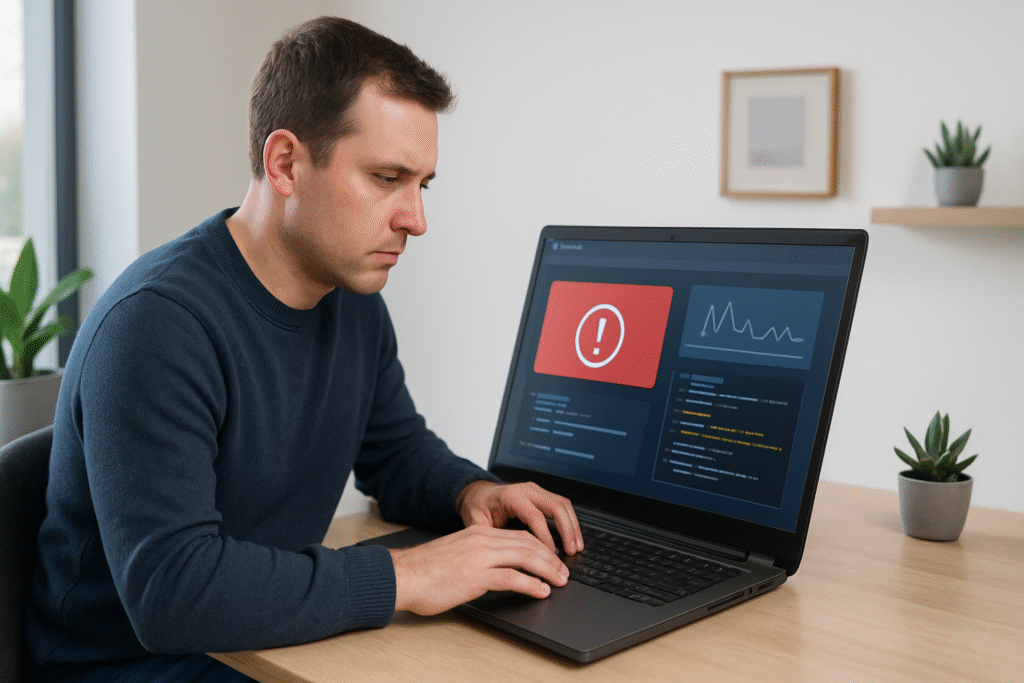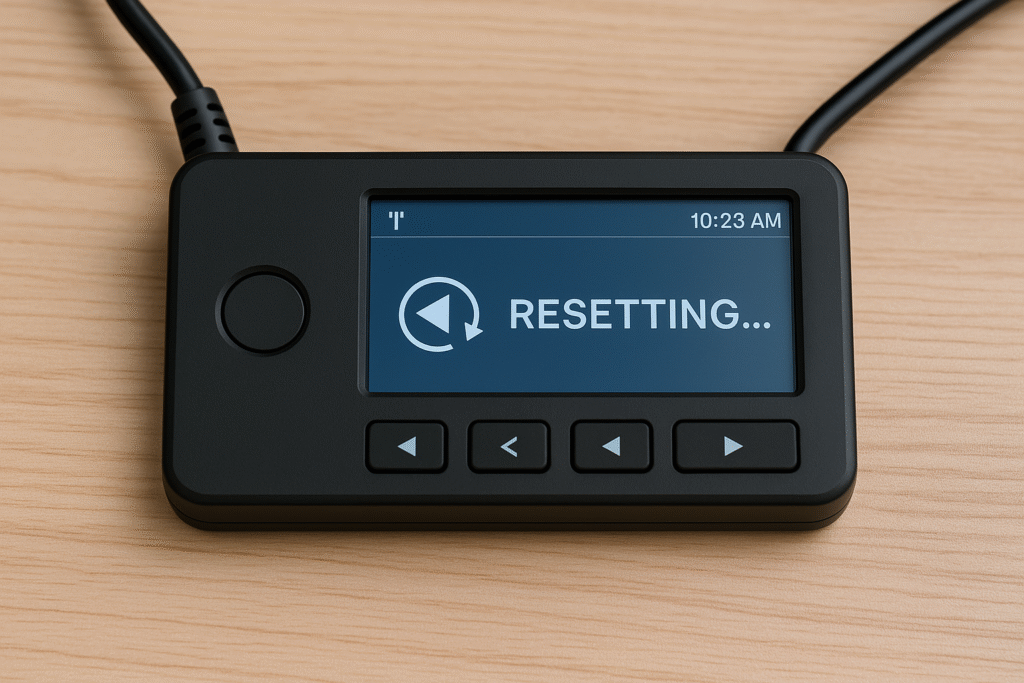When you encounter the Ralbel28.2.5 bug, it can interrupt your work, lead to system crashes, and create unnecessary stress. This guide provides clear, actionable, and professional solutions to resolve the issue effectively. Whether you’re a developer, IT professional, or general user, you’ll find step-by-step troubleshooting methods, from quick fixes to advanced debugging, ensuring your system returns to stable operation.
Understanding the Ralbel28.2.5 Bug
What Is Ralbel28.2.5?
The Ralbel28.2.5 bug refers to a software malfunction typically seen in complex systems that rely on multiple software modules, libraries, and dependencies. This error may occur across various environments such as enterprise platforms, cloud-based systems, and certain development frameworks.
Common symptoms include:
-
Application crashes or freezing during operation ❄️
-
Error messages mentioning “Ralbel28.2.5”
-
Slow or unresponsive system performance
-
Unexpected shutdowns or restarts
Understanding what triggers this error is essential for resolving it thoroughly and preventing it from returning.
Why This Bug Occurs?
The causes behind Ralbel28.2.5 are typically related to software conflicts and configuration errors. Some of the most frequent reasons include:
-
Software Conflicts: When multiple applications or services attempt to access the same system resources simultaneously, they may conflict with one another, leading to this bug.
-
Version Incompatibility: Updates or newly installed components might not align with existing software versions, causing dependency issues.
-
Configuration Errors: Incorrect settings, corrupted files, or misaligned system parameters can create conflicts that trigger this bug.
-
User Mistakes: Manual errors such as improper installations, deleting essential files, or incorrectly modifying configurations may also contribute.
👉 Tip: Keeping a detailed log of recent updates, software installations, or system changes can help you quickly trace the root cause of this bug.
Immediate Troubleshooting Steps
Backup Your System First
Before attempting any fix, always back up your system. 🔐
This is a critical first step to ensure you don’t lose valuable data during the troubleshooting process. Even simple fixes can sometimes cause unexpected issues, so it’s wise to secure:
-
Important files and documents
-
System configuration files
-
Application data and databases
You can use external storage devices, cloud services, or enterprise backup solutions depending on your setup. Once your data is safe, you can proceed with confidence, knowing your system is protected against potential data loss.
Apply Quick Fixes
After your backup is complete, you can attempt quick and often effective fixes that may resolve the issue without requiring advanced intervention.
✅ Restart Processes:
A simple system reboot or restarting the affected application can often clear temporary conflicts and refresh system resources.
✅ Clear Cache and Temporary Files:
Sometimes, corrupted cache or temp files cause software conflicts. Use built-in system tools or third-party cleaners to clear:
-
Application caches
-
System temporary folders
-
Session and log files
✅ Update Dependencies:
Check for pending software updates or patches. Make sure:
-
The application itself is updated
-
Related frameworks, libraries, and system drivers are on their latest stable versions
👉 If these quick fixes don’t resolve the issue, move on to more advanced troubleshooting steps outlined below.
In-Depth Solutions to Fix Ralbel28.2.5
Update or Reinstall Related Software
If quick fixes don’t work, the problem may lie deeper within the software components. One of the most effective strategies is to update or reinstall the affected software.
🔄 Update All Relevant Components:
-
Visit the official website or trusted vendor portals to download the latest updates.
-
Ensure that all dependent libraries, plugins, and extensions are updated alongside the core software.
-
Apply any patches specifically addressing known bugs related to Ralbel28.2.5.
💾 Perform a Clean Reinstallation:
If updates fail, a complete uninstall and fresh installation may resolve corrupted files or incomplete installations:
-
Uninstall the software completely.
-
Remove residual files from installation directories and registry entries (on Windows systems).
-
Download a fresh installer directly from the official source.
-
Reinstall using recommended installation procedures.
👉 Tip: Always restart your system after reinstallation to ensure new configurations take full effect.
Check for Compatibility Issues
Often, the root cause of Ralbel28.2.5 lies in incompatibility between different software or hardware components. You need to carefully evaluate system compatibility to eliminate conflicts.
🔍 Verify OS and Hardware Compatibility:
-
Confirm your operating system version meets the software’s minimum requirements.
-
Check hardware specifications such as CPU architecture, RAM capacity, and available disk space.
🔧 Identify Dependency Conflicts:
-
Review all supporting software (libraries, drivers, third-party tools) for version mismatches.
-
Use dependency management tools to analyze whether all modules align properly.
⚠ Ignoring compatibility issues often leads to recurring software instability, making this one of the most important investigative steps.
Edit Configuration Files
In many cases, the Ralbel28.2.5 bug is triggered by misconfigured system or application settings. Reviewing and correcting configuration files can often resolve hidden issues.
📝 Modify Configuration Parameters:
-
Locate the application’s primary configuration files (often found in installation or system directories).
-
Check for incorrect paths, memory allocation settings, user permissions, or environment variables that might be misaligned.
🔄 Reset to Default Settings:
-
If you’re unsure which parameters are incorrect, many applications allow you to restore default configurations directly from the settings panel or via command-line options.
-
Restoring defaults ensures that any accidental changes are reversed.
👉 Always make a backup of configuration files before editing to safeguard against unintended changes that could cause further instability.
Use Debugging Tools
When manual adjustments don’t fix the problem, it’s time to leverage advanced debugging tools to pinpoint the exact source of the error. 🛠
🔧 Recommended Debugging Tools Include:
-
Log Analyzers: Parse system and application logs to extract detailed error traces.
-
Performance Monitors: Track resource utilization to spot performance bottlenecks.
-
Code Profilers: Examine how software modules execute to identify flawed logic or memory leaks.
🔍 Step-by-Step Debugging Approach:
1️⃣ Reproduce the error consistently under controlled conditions.
2️⃣ Activate detailed logging or verbose modes to capture full error data.
3️⃣ Analyze logs and performance metrics for recurring patterns.
4️⃣ Cross-reference error codes with vendor documentation or community discussions.
👉 Mastering these tools allows you to diagnose even deeply embedded bugs that elude surface-level fixes.
Advanced Developer-Level Fixes
Analyzing Source Code Conflicts
If all prior solutions fail, the issue may be embedded within the source code itself. This step requires advanced technical knowledge but can be the most effective in identifying the root cause.
🔎 Examine Stack Traces:
-
Use generated stack traces to trace exactly where the application is breaking.
-
Identify recurring error points across multiple crash reports.
📂 Review Recent Code Changes:
-
Look for any recent code deployments, updates, or merges that could have introduced new conflicts.
-
Utilize version control systems like Git to compare previous versions and spot problematic changes.
💡 Tip: Rolling back recent changes one at a time can help isolate the specific update that triggered the bug.
Contacting Vendor or Community Support
When internal efforts aren’t enough, it’s wise to seek assistance from official vendor support channels or developer communities that specialize in the software you’re using.
📞 Official Vendor Resources:
-
Reach out to the software vendor’s technical support team with detailed logs, system specifications, and step-by-step reproduction steps.
🌐 Online Developer Communities:
-
Participate in forums like Stack Overflow, GitHub Issues, or specialized technical communities where others may have faced—and solved—similar issues.
🔍 Provide Clear Details:
-
The more specific your error description, the better the community or vendor can assist you. Include error messages, logs, recent updates, and system configurations.
👉 Collaborative troubleshooting often uncovers solutions that may not be documented officially but have been field-tested by others.
Hiring Professional Support
Sometimes, even after exhausting internal resources and community forums, the bug persists. In such cases, hiring professional support can save significant time, reduce risk, and prevent prolonged downtime. 🧑💼
🔐 When to Consider Professional Help:
-
The system is mission-critical and downtime is costly.
-
Internal staff lack the specialized expertise required.
-
The bug is deeply rooted in complex code or legacy systems.
-
Extended troubleshooting is delaying business operations.
💼 Benefits of Professional Services:
-
Access to experienced developers and certified technicians.
-
Advanced diagnostic tools unavailable to general users.
-
Direct vendor partnerships that may offer priority support.
-
Comprehensive solutions that address both immediate and underlying problems.
📊 Weighing the Cost vs. Risk:
-
Although hiring experts may involve upfront costs, the potential savings from faster resolution and minimized downtime often outweigh these expenses.
👉 For organizations where system stability directly impacts revenue, professional intervention can be the smartest long-term investment.
Preventing Future Occurrences
Resolving the current issue is important, but preventing future instances of Ralbel28.2.5 is even more valuable for maintaining system stability and performance. 🛡
Regular Updates and Maintenance
🕒 Stay Updated:
-
Regularly apply software patches and security updates.
-
Ensure all dependencies are updated to compatible versions.
🔧 Conduct Routine System Health Checks:
-
Periodically audit system logs for emerging errors.
-
Monitor hardware and software resource utilization to catch early warning signs.
💡 Automation Tip:
Utilize automated update systems and monitoring tools to ensure consistent maintenance without requiring constant manual intervention.
👉 Proactive maintenance dramatically reduces the likelihood of encountering similar bugs in the future.
Frequently Asked Questions (People Also Ask)
Is Ralbel28.2.5 a security vulnerability?
Not directly. While Ralbel28.2.5 is usually a software stability issue, unresolved bugs can sometimes expose systems to vulnerabilities if they affect security modules. Always patch your software promptly to minimize any indirect risks.
Can beginners fix Ralbel28.2.5 without coding skills?
In some cases, yes. Many issues related to Ralbel28.2.5 can be fixed by following basic troubleshooting steps like updating software, reinstalling programs, or adjusting configuration settings. However, complex cases may require technical expertise.
What if reinstalling doesn’t fix the bug?
Move to deeper diagnostics. If reinstalling doesn’t resolve the problem, check for compatibility issues, analyze configuration files, and use debugging tools. In critical situations, professional assistance may be necessary.
Does this bug affect performance long-term?
Potentially, yes. If left unresolved, Ralbel28.2.5 can lead to repeated crashes, slow performance, or system instability. Early detection and proper resolution help maintain system efficiency over time.
Conclusion
The Ralbel28.2.5 bug may seem daunting, but with a structured approach—from quick fixes to advanced debugging—it’s highly manageable. By applying regular updates, practicing strong QA, and using real-time monitoring, you can not only resolve this issue but also prevent future occurrences.
Always back up your system, stay proactive, and don’t hesitate to seek expert help if needed. Your system’s stability—and your peace of mind—are well worth it. ✅
Read more about tech Inghts: How to Reset the ZL902 Safely



